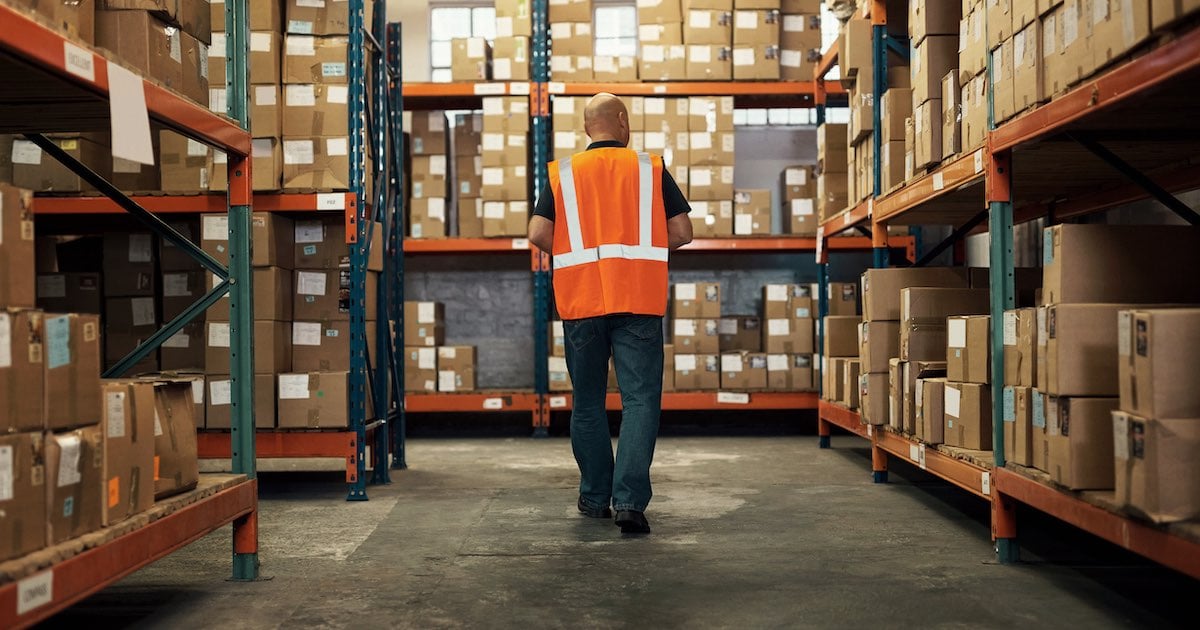Written by SmartSense | Patient Safety, Healthcare
Explore solutions built for your industry
Our customer-proven solutions monitor medications and food inventories for some of the most recognizable names in the industries of healthcare, food service, and transportation, and logistics. See how our solutions adapt to your industry needs.
SEE SOLUTIONSKroger Health Strengthens Compliance Visibility with SmartSense
Watch The VideoLEARN
Questions? Call +1 (866) 806-2653 to speak to our experts.
Schedule demoQuestions? Contact us.
Call +1 (866) 806-2653 to speak with our experts or get started with a demo.
CONTACT USAbout Us
SmartSense was created to use the power of the Internet of Things (IoT) to help our customers protect the assets most critical to the success of their business.
See our storyCONNECT. PROTECT. RESULTS.
Questions? Call +1 (866) 806-2653 to speak to our experts.
Schedule demoPlease select your login
August 22, 2023
Sensing-as-a-Service Empowers Data Analysis in Healthcare and Commerce with Integrated Data Exchange
In the evolving Sensing-as-a-Service ecosystem, no single solution provider can cover all the connectivity requirements for an organization’s IT systems. Neither can a data analyst be expected to have complete knowledge of a company’s vertical-specific needs, covering everything from facilities and finance to operations and task management.
But when a data analyst is partnered with an open platform that takes advantage of data exchange across third-party sensors and data fusion capabilities, together they can provide just what a business needs to succeed and meet KPIs: descriptive insights and business intelligence to improve executive decision-making and real-time prescriptive workflows to guide employees toward immediate and accurate corrective actions. These benefits —and many more — extend well beyond the programmed functions of digital sensors by themselves.
Hiring a Data Analyst: The Vertical Challenge & Solution

Currently, CIOs are navigating historic staffing issues and must prioritize technology support for facilities, operations, and finance based upon efficiency, revenue, and customer experience. Finding data analysts, in particular, with a deep understanding of data science and expert-level business knowledge within a specific vertical can be a challenge for many companies.
An analyst who possesses the fundamental knowledge of data science may lack the vertical-specific knowledge an organization needs to achieve their desired outcomes. Different industries generate unique types of data. For example, driving insights from healthcare industry monitoring data requires specific experience that analysts who have domain knowledge in, say, retail grocery most likely cannot claim.
Even more daunting is finding an analyst with exceptional communication skills essential for enabling change management. A smart and capable employee who finds the root cause of data issues but cannot convince co-workers to remedy behaviors with tact and effective leadership will not succeed in leveraging data insights.
To combat the challenges of talent acquisition, the ideal situation is a system that can imitate the necessary data analytics at the specific vertical level. A vertical-specific system does not wholly replace professional data analysts or data scientists — they remain indispensable for managing the data and ensuring its insights are applied across business functions. Nevertheless, enabled with the right IoT data in a seamless cloud dashboard, one data professional can do the work of five with greater impact to guide the system for better accuracy and fine tune the software for faster scaling.
Data Exchange & Data Fusion: SmartSense by Digi® Cloud Dashboard Empowers Data Analysis

The adoption of data exchange and data fusion processes enables businesses to advance beyond relying on a single stream of data and to create greater visibility into the execution of their multiple operations.
What is data exchange? Simply put, data exchange is the staged migration process that transfers data from one server to another, either on-premises or in the cloud. Incorporating more streams of data through open exchange — including data from multiple technology partners — enriches the vertical system. Open data exchange enhances business intelligence and analytics tools, propelling them to generate descriptive insights and prescriptive workflows instead of merely churning out basic reports.
What is data fusion? Also simply put, data fusion refers to gathering different kinds of information together into a procedure yielding a single model. Data fusion correlates and analyzes information from multiple related datasets to provide executives with a much better platform to make more informed decisions.
When a data science team is well-defined and well-designed, they have the power to fully leverage the potential of an open platform. By practicing open exchange and applying data fusion, companies create an ecosystem where decision-as-a-service models thrive, platforms benefit from shared data, and technology customers are relieved from the burden of analysis.
Data exchange and data fusion generate descriptive insights. Because data science teams are no longer solely focused on a single stream of data, data exchange and data fusion offer CIOs the following benefits:Greater visibility into the execution of operations Enriched business intelligence Insights to make better executive decisions
Easier task management and increased employee productivity Immediate action based on real-time data Corrective guidance
Healthcare Organizations: How to Leverage Data Exchange

As healthcare professionals anticipate improvements in health data exchange, technological frameworks for open innovation are changing the way technology is developed and leveraged across enterprises. Moreover, while 88% of hospitals harness health data exchange in their EHR systems, the potential to expand interoperability across the tech stack serves as a key opportunity for CIOs to optimize their systems and improve patient care.
As the rate of healthcare data exchange increases, technology systems are infused with greater intelligence and corresponding actionability — thereby leading to value creation for enterprises and vendors alike. For healthcare CIOs, ensuring that the fundamental components of their IT organization can support innovation and transformation is a top priority. The organization’s EHR, ERP, lab system software, and radiology solutions must be maintained as a foundation.
A common problem for many healthcare organizations is the proliferation of too many applications. Switching applications is burdensome for frontline employees, and integration obstacles slow down workflows and inhibit potential insights. In addition, critical compliance considerations—the types of data being collected, where data moves, and how data is being stored—must be built into the software.
CIOs need to filter potential partners by their capabilities to support optimization and digital transformation, integrate with core systems, create efficiencies that ease resource constraints, and expand upon their existing platforms rather than build new ones. The ability to grow with a client, both in scale and capability, helps vendors evolve into partners who CIOs can trust.
Commercial Companies: How to Develop an Open Platform Model

The commercial IoT space is becoming less fragmented by supporting more interoperability. This trend creates opportunities for forward-looking companies to operate within an open Sensing-as-a-Service platform model. How is “open platform” defined within this emerging space?
IoT companies are working to standardize different connectivity platforms and hardware devices to create greater compatibility. Removing fragmentation benefits both vendors and enterprise customers by enabling an ecosystem where data from multiple sources funnel into a single platform that provides better descriptive insights and prescriptive workflows.
The first step to operating in an open platform model is to build in a market with well-established connectivity standards. Just like two people engaged in a dialogue, IoT devices need a common language. In the commercial IoT space, there are several standards for connectivity but not as many for how individual devices talk to each other.
Second, an open platform model requires data exchange. Operators need to create an open layer enabling devices to discover and communicate with each other. Established connectivity standards such BLE and Z-WAVE provide methods for communication among devices.
Third, a standard for how devices actually communicate must be established. The Open Connectivity Foundation (OCF) is one standard that addresses this requirement by helping define how two devices should discover and communicate with each other, notify on failure, and authenticate and secure the data. When vendors adhere to this standard, their APIs follow a predictable structure and can be used without additional programming.
If each device adheres to the same protocol, integration and data exchange are easily achieved. The strategy enables companies to configure its widely adopted IoT sensing and monitoring solutions for seamless interoperability with third-party sensing devices and enterprise management systems.
SmartSense by Digi's IoT Sensing-as-a-Service Open Platform
SmartSense by Digi's IoT Sensing-as-a-Service open platform is designed for operating within the new ecosystem of applications propelled by data exchange and data fusion. Our customers increasingly desire flexible, best-of-breed solutions that integrate with their existing tech stacks to simplify the complexities of their specific vertical requirements. Whether it’s leveraged for inventory accuracy, workforce management, loss prevention, or asset monitoring, our transformative approach will align with this new ecosystem for years to come.
The SmartSense IoT open platform is founded on three pillars: Streamlined data extraction: Extracts IoT sensing and monitoring data (e.g., temperature readings, incident occurrences, tasks, checklists, corresponding actions) with API integrations for use in other enterprise applications. Maximized hardware investments: Ensures customers can maximize the ROI of their existing tech stack by removing silos and integrating various hardware and software architectures with SmartSense IoT sensing, monitoring, and our prescriptive analytics solutions. Seamless third-party compatibility: SmartSense uses a certification process to integrate other sensing devices with the ability to rapidly serve unique customer needs for specific use cases that are not part of the SmartSense core offering.
In this SmartSense video, Chief Product Officer Sammy Kolt explains how these pillars can enhance your operations and improve your margins.
Topics:
Patient Safety
Healthcare
Other Suggested Posts
Why Customer Success Makes the Difference in Your Condition Monitoring Program
If your business objective is to implement an efficient and successful condition monitoring program, gone are the days of “set it and forget it.” Today’s savvy ...
How to Improve Ambient Temperature Monitoring in Hospitals
The primary role of ambient temperature monitoring in hospitals is to create a safer environment for both patients and healthcare providers. At the core of ...
How to Ensure the Integrity of Life Sciences Supply Chains
According to an SAP survey from 2022, a majority of senior executives at enterprise businesses reported that the unprecedented supply chain disruptions caused ...
How High Reliability Organizations Evaluate IoT Vendor Security Compliance
Focusing more attention recently on patient-centered care, the U.S. healthcare sector has been motivated to establish more high reliability organizations ...
How Machine Learning Elevates Traditional Temperature Monitoring
While a minority of food companies and healthcare organizations continue to manually collect temperature logs to meet compliance regulations, most enterprises ...
Subscribe to the SmartSense Blog
Stay up-to-date on the evolution of IoT connectivity.
CONNECT. PROTECT. RESULTS.
Learn how our complete critical
environment monitoring solution will help you
connect and transform your business.
Call +1 (866) 806-2653 to speak with our industry
experts or get started by
requesting a demo.